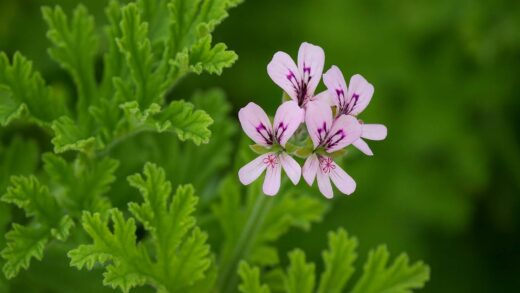The sloe, or blackthorn, is a remarkably resilient and low-maintenance shrub, often seen thriving in hedgerows and wild landscapes without any human intervention. Bringing this rugged charm into a cultivated garden setting requires an understanding of its inherent needs, which are fundamentally simple yet crucial for optimal health and fruit production. Caring for sloe is less about intensive cultivation and more about providing the right conditions and performing key tasks at the right time. This approach ensures the plant not only survives but flourishes, offering its beautiful spring blossoms, dense thorny structure for wildlife, and the highly sought-after tart fruits in autumn. Embracing its wild spirit while providing gentle guidance is the key to successfully cultivating this native gem.
Proper care begins with appreciating the plant’s natural life cycle and characteristics. The sloe is a deciduous shrub that is one of the very first to burst into a cloud of white flowers in early spring, often before its leaves emerge. This early flowering makes it a vital source of nectar for pollinators awakening from winter. Following the bloom, it develops small, dark green leaves and, over the summer, the iconic dark purple to black drupes. These fruits are famously astringent until they have been softened by the first frosts of late autumn, a process known as bletting. Understanding this timeline helps inform when to prune, when to look for fruit, and when the plant is in its dormant stage.
The fundamental aspects of sloe care revolve around providing a suitable environment that mimics its natural habitat. This means well-drained soil, ample sunlight, and enough space to accommodate its sometimes-unruly growth habit. While it is incredibly tolerant of poor soils and challenging conditions, paying attention to these basic requirements will result in a healthier, more vigorous plant with a more abundant fruit yield. Regular monitoring for signs of stress, disease, or pest infestation is also a part of good stewardship, allowing for early intervention if problems arise. However, its hardy nature means such problems are often less frequent than with more delicate cultivated species.
Ultimately, a successful approach to caring for the sloe involves a light touch. It is not a plant that responds well to over-fertilization, excessive watering, or constant pruning. The goal is to create a balance where the shrub can grow robustly without becoming an unmanageable thicket, unless that is the desired outcome for a dense hedge. By respecting its natural tendencies and providing for its basic needs, you can enjoy the full range of benefits this exceptional plant has to offer, from its ecological value to its culinary potential. This hands-off yet attentive method is the cornerstone of effective sloe management in any garden.
Understanding the sloe’s nature
The sloe is fundamentally a pioneer species, adapted to colonize open ground and thrive in conditions where other plants might struggle. Its dense, thorny branches form impenetrable thickets, a defense mechanism that also provides an excellent, protected habitat for nesting birds and small mammals. This inherent wildness is a critical factor to consider in its care; it has a natural tendency to spread via root suckers, which can be either a desirable trait for creating a hedge or a maintenance challenge in a mixed border. Acknowledging this suckering habit is the first step toward managing its growth effectively within a garden’s confines.
More articles on this topic
Its life cycle is perfectly attuned to the temperate climate. The spectacular display of flowers appearing on bare, black branches in March or April is a key identifying feature and a welcome sign of spring. This is followed by the development of foliage and the slow ripening of the fruit throughout the summer months. The plant’s energy during this period is focused on fruit and seed production. As autumn progresses, the leaves will drop, and the plant enters a dormant period, having stored sufficient energy in its root system to survive the winter and fuel the following spring’s burst of growth and flowering.
Ecologically, the sloe plays a significant role. Its early blossoms are a lifeline for bees and other insects emerging from hibernation when few other nectar sources are available. The leaves provide food for the caterpillars of numerous moth species, including the magpie moth and the emperor moth. In the autumn and winter, the fruits are a valuable food source for birds like thrushes and waxwings, especially after frosts have reduced their bitterness. Therefore, when caring for a sloe, you are not just cultivating a single plant but supporting a small ecosystem.
This inherent hardiness means the sloe is remarkably tolerant of a wide range of environmental conditions. It can handle coastal exposure with salt-laden winds, urban pollution, and periods of drought once established. It is not particular about soil pH, growing happily in acidic, neutral, or alkaline conditions. This resilience is what makes it such a low-maintenance option for gardeners, but it also means that any sign of poor health is a significant indicator that a fundamental need, such as drainage or sufficient sunlight, is not being met.
Soil and site considerations
Choosing the right location is the most critical step in ensuring a healthy sloe shrub for years to come, as a well-sited plant requires significantly less intervention. The primary requirement is good drainage. While the sloe can grow in various soil types, from light sandy soils to heavy clays, it will not tolerate waterlogged conditions. Standing water around the root system can lead to root rot and other fungal diseases, which are among the few health issues that can seriously affect this otherwise robust species. Before planting, assess the site’s drainage after heavy rain to ensure water does not pool for extended periods.
More articles on this topic
In terms of soil composition, the sloe is exceptionally adaptable. It is often found thriving on poor, infertile soils in the wild, so it does not require a richly amended garden loam to perform well. In fact, overly rich soil can sometimes lead to excessive, soft vegetative growth at the expense of flowering and fruiting. A moderately fertile soil is perfectly adequate. If you are dealing with very heavy clay, incorporating some organic matter like compost or grit can help improve its structure and drainage, creating a more favorable environment for the root system to establish itself.
Sunlight is another key factor for the successful cultivation of sloe. For the best flower display and the most abundant fruit crop, a position in full sun is ideal. The plant will tolerate partial shade, but this often results in a more open, leggy growth habit and a significant reduction in both flowers and fruit. The more sunlight the plant receives, the more energy it can photosynthesize, which directly fuels the production of blossoms and the subsequent development of the sloes. When selecting a site, observe the path of the sun throughout the day to find a spot that receives at least six hours of direct sunlight.
Finally, consider the plant’s mature size and growth habit. A single sloe shrub can grow to be four or five meters tall and just as wide, and it will naturally send out suckers to expand its territory. Therefore, it is essential to give it enough space to grow without crowding out other plants or encroaching on paths and structures. If you are planting it as a standalone specimen, allow ample room around it. If it is being used for hedging, this suckering tendency is an advantage, but you will still need to manage its spread to keep the hedge within its intended boundaries.
Routine maintenance throughout the year
During the spring, the primary focus of sloe care is to enjoy the blossom and ensure the plant has what it needs for the upcoming growing season. After the spectacular floral display, the plant will begin to leaf out. This is a good time to apply a layer of organic mulch, such as well-rotted compost or bark chippings, around the base of the plant. This mulch will help to suppress weeds, conserve soil moisture as the weather warms up, and provide a slow release of nutrients to the soil throughout the year. Avoid piling mulch directly against the stem, as this can encourage rot.
As summer arrives, the sloe is generally self-sufficient, especially once it is well-established. For newly planted shrubs, however, it is important to monitor soil moisture during prolonged dry spells. A deep watering every week or two during a drought will help the young plant develop a strong root system. For mature plants, watering is rarely necessary unless you are experiencing an exceptional and extended period of drought. Summer is also the time to be vigilant for any signs of pests or diseases, although these are typically minor on a healthy sloe plant.
Autumn is a key season for the sloe, as this is when the fruits ripen and are ready for harvest. The berries will turn a deep, dark purple-black, often with a pale, waxy bloom on the surface. Traditionally, the best time to harvest is after the first one or two frosts, as this process breaks down the tannins in the fruit, making them less astringent and more palatable for use in sloe gin, jellies, and syrups. If an early frost doesn’t arrive, the fruits can be picked and frozen at home to achieve a similar effect. Beyond harvesting, autumn care involves little more than clearing away any fallen leaves from around the base of the plant.
Winter is the dormant season for the sloe, and it is the ideal time for any structural pruning that may be necessary. With the leaves gone, the plant’s framework of thorny branches is clearly visible, making it much easier to see where cuts should be made. This is the time to remove any dead, damaged, or crossing branches to maintain the plant’s health and shape. It is also the best time to manage the plant’s size and remove any unwanted root suckers that have appeared further away from the main shrub. This winter maintenance sets the stage for vigorous, healthy growth in the spring.
Managing growth and form
Managing the growth of a sloe shrub is primarily about controlling its size and its natural inclination to spread. The most significant aspect of this is dealing with root suckers. These are new shoots that arise from the plant’s extensive root system, often appearing some distance from the parent plant. If left unchecked, a single sloe can quickly develop into a dense thicket. To prevent this, you should regularly remove these suckers as they appear. The most effective method is to sever them from the main root with a sharp spade and pull them out, rather than just cutting them at ground level, which can encourage more vigorous regrowth.
The overall form of the sloe can be shaped through careful pruning, which is best done in the winter when the plant is dormant. For a standalone specimen shrub, the goal is often to create an open, vase-like structure that allows for good air circulation and light penetration into the center of the plant. This involves removing branches that cross over each other or grow inwards towards the center. Thinning out some of the older, less productive wood can also encourage the growth of new, vigorous shoots that will flower and fruit more prolifically in the coming years.
If you are growing sloe as part of a hedge, the management approach is different. Here, the dense, suckering growth is a distinct advantage, helping to create a thick and impenetrable barrier. Pruning a sloe hedge is typically done in late winter or early spring to shape it and keep it tidy. You can trim the sides and top of the hedge to maintain the desired dimensions. Be aware that heavy trimming may reduce the amount of flowering and fruiting for that year, as the plant flowers on wood that was produced in the previous season. A balance must be struck between tidiness and productivity.
For very old and overgrown sloe shrubs that have become unproductive, a more drastic form of management called rejuvenation pruning can be employed. This involves cutting the entire plant back hard, to within 15-30 centimeters of the ground, during the dormant season. While this seems extreme, the sloe is incredibly tough and will respond by sending up a flush of new, strong shoots from the base. You can then select the best of these new stems to form the new framework of the shrub, creating a completely revitalized plant over the course of a few seasons.
Harvesting and its impact on care
Harvesting sloe berries is a key activity for anyone growing the plant for its culinary uses, and the process itself has minimal impact on the plant’s long-term health. The optimal time for picking is in the autumn, after the first frosts have occurred. This is because the freezing temperatures help to break down the cell walls of the fruit, reducing their intense astringency and beginning the process of making them palatable. Wearing thick gloves is highly recommended during harvesting, as the branches are covered in sharp thorns that can easily scratch and puncture unprotected hands.
The method of harvesting is straightforward: the small, dark drupes can be picked individually by hand. For a large, heavily laden shrub, this can be a time-consuming process. An alternative method is to lay a sheet or tarpaulin on the ground beneath the plant and gently shake the branches, which will cause the ripe berries to fall. This method is quicker but may also bring down leaves and twigs that will need to be sorted out later. It is important to handle the branches with care to avoid snapping them, as this can create entry points for diseases.
The removal of the fruit does not place any significant stress on a healthy sloe plant. In fact, by harvesting the berries, you are preventing them from falling to the ground and potentially germinating, which can help to control the unwanted spread of new seedlings around the garden. After the harvest, no special care is required for the plant. It will proceed into its natural winter dormancy. The resources it would have used to support the fruit through the winter can instead be stored in the roots, ready to fuel the following spring’s growth.
It is worth noting that the abundance of the harvest can vary from year to year. A late frost in spring can damage the early-opening flowers, leading to poor pollination and a subsequently smaller crop of sloes. Similarly, a very dry summer can result in smaller, less juicy fruits. These are natural fluctuations that are largely beyond the gardener’s control. Consistent care, such as ensuring the plant is not stressed by competition or poor conditions, provides the best foundation for a reliable harvest each autumn. The act of harvesting itself is a simple reward for a year of good stewardship.
Long-term health strategies
Ensuring the long-term health of a sloe shrub is a matter of consistent, observant care rather than intensive effort. The most effective strategy is to start with a healthy, well-sited plant, as this prevents a multitude of future problems. A location with full sun and well-drained soil is the best defense against disease and promotes strong, resilient growth. Once established, the sloe’s natural hardiness will handle most challenges, but regular observation allows you to spot any potential issues, such as pests or diseases, before they become serious. A quick walk around the plant every few weeks is usually sufficient.
Maintaining good air circulation through and around the shrub is a crucial preventative health measure. The sloe’s naturally dense growth can create a humid microclimate in the center of the plant, which is an ideal environment for fungal diseases to develop. A strategic pruning session every couple of years during the dormant season can make a significant difference. This involves thinning out some of the internal branches to open up the structure, allowing air and sunlight to penetrate more effectively. This simple act is one of the best ways to keep the foliage healthy throughout the growing season.
Managing the area around the base of the sloe is also important for its long-term vitality. Keeping a clear, weed-free circle around the trunk reduces competition for water and nutrients, especially for younger plants. Applying an annual mulch of organic matter feeds the soil, improves its structure, and helps to regulate soil temperature and moisture levels. This practice supports the beneficial microorganisms in the soil, which in turn contribute to the overall health of the plant’s root system, the foundation of a thriving shrub.
Finally, a key long-term strategy is to work with the plant’s natural tendencies rather than fighting against them. Accept that it will produce suckers and plan for their management. Understand that its fruit production may fluctuate with the seasons. Avoid the temptation to over-fertilize or over-water, as this can weaken the plant and make it more susceptible to problems. By providing a solid foundation and practicing mindful, minimal intervention, your sloe will remain a healthy, productive, and beautiful feature in the landscape for many decades.


















